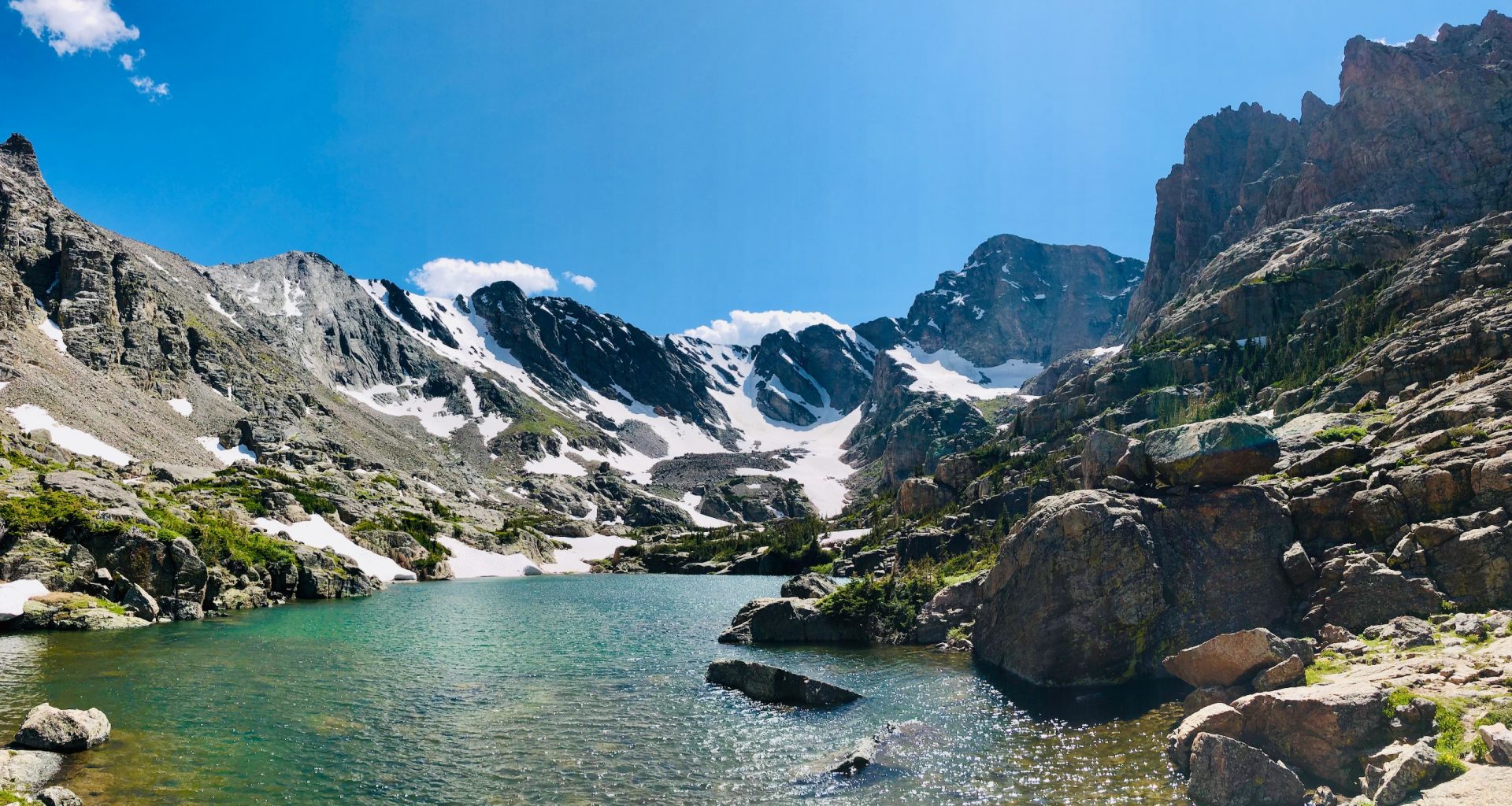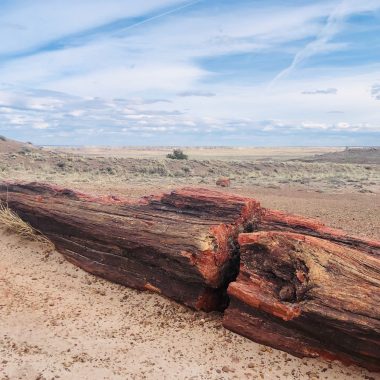Ok, I have a confession to make. I lived in Denver for three years and never camped or really did any serious hiking in Rocky Mountain National Park. It wasn’t a total miss on my part. I did take friends who were visiting Colorado on scenic drives through the park, crested the epic 12,000 foot plus elevation Trail Ridge Road, and even saw the famous elk migration that happens in late fall. But now, having gone back for a true multi-day hiking trip, I know something that everyone should know. The most stunning parts of the park are only accessible on foot. Rocky Mountain National Park rivals both Glacier, Tetons, and Yosemite in terms of sheer beauty. You just have to work a little bit for it here. If you are willing, the payoff is more than worth it.
Dream and Emerald Lakes
According to AllTrails, the #1 hike in Rocky Mountain National Park is the Emerald Lake Trail. This low-calorie hike is just three miles out and back, with a little over 700 feet of elevation gain. For that, you get to experience not just one, but two of the most beautiful alpine lakes in the Rocky Mountains. The scenes along this trail are truly jaw-dropping. I would put this in my top five most scenic hikes of all time– it is exquisite.
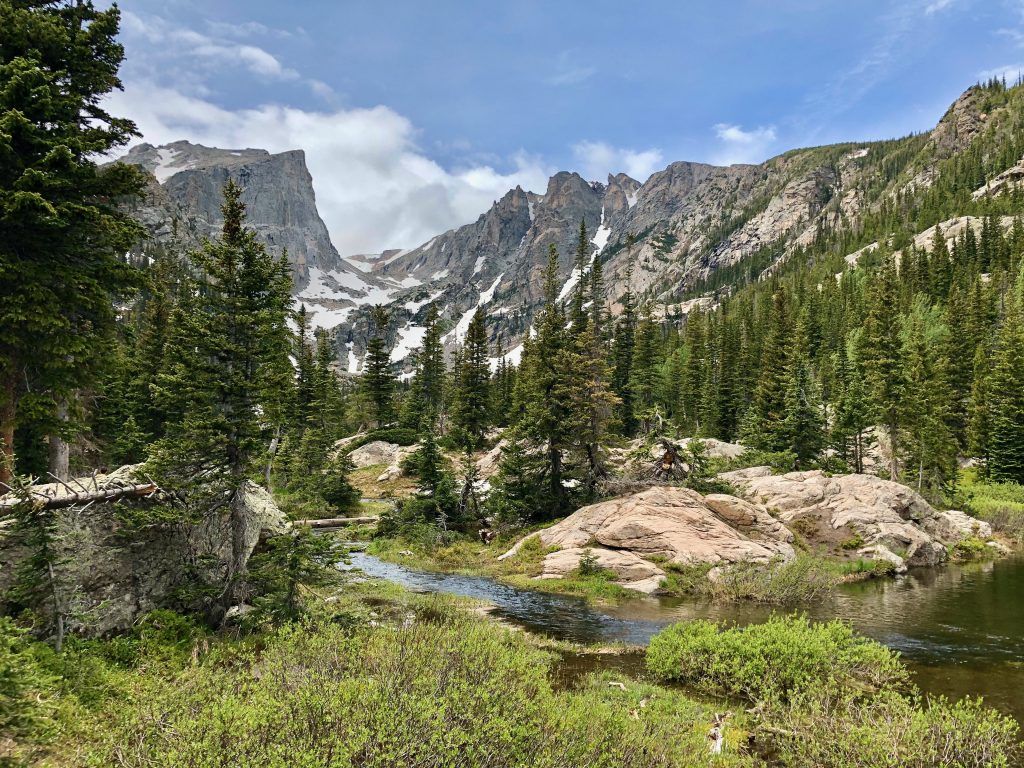
Before reaching the trail terminus at Emerald Lake, you traverse along the western edge of Dream Lake– which more than lives up to its name.

Dream Lake offers plenty of great picnic spots along the shoreline. You’ll want to stop and spend some time here to take it all in before hiking the last short leg up to Emerald Lake.
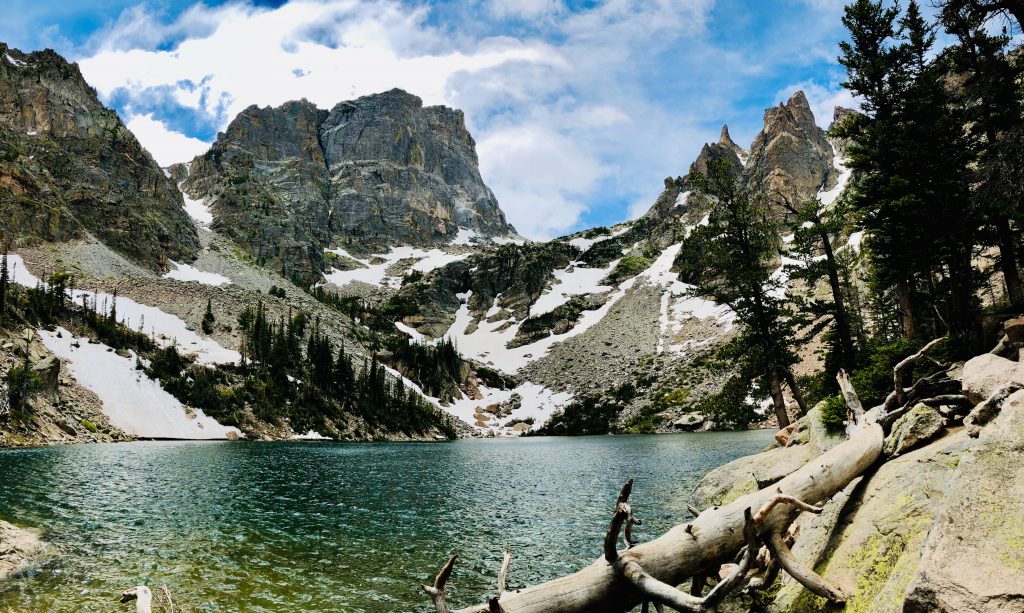
The trail ends at Emerald Lake, which sits below the majestic 12,700 foot Hallet Peak. Along the way there’s a good chance you’ll see marmots, elk, or even a moose. Wildlife is plentiful here.
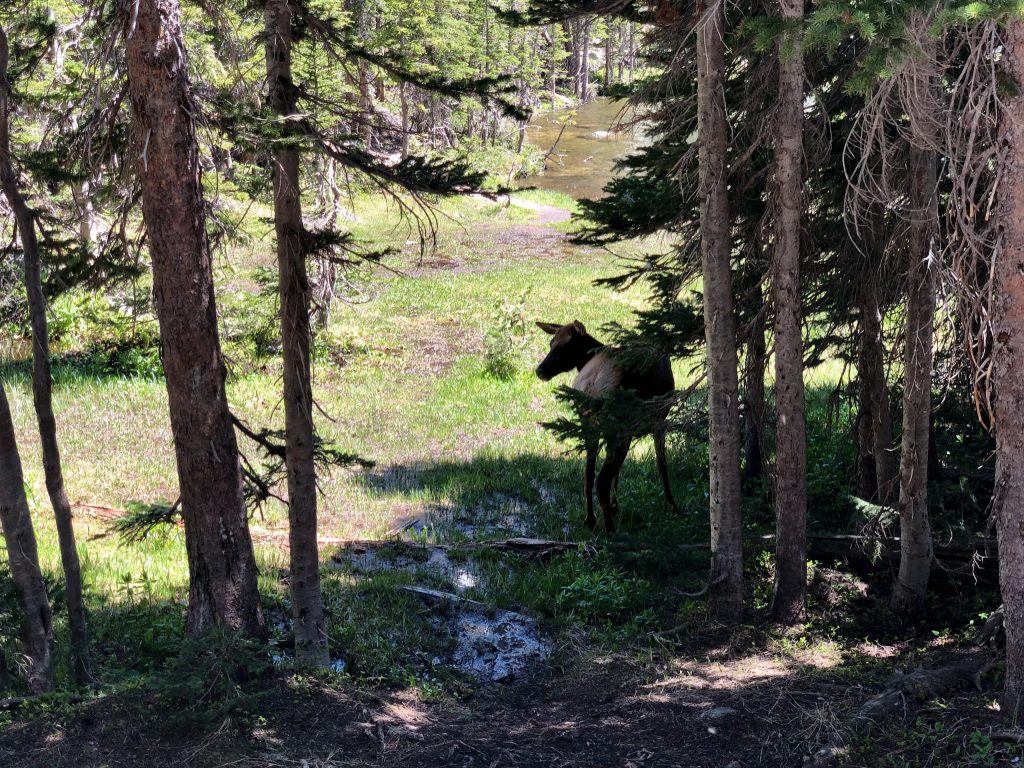
Sky Pond via Glacier Gorge Trail
The second most popular hike in Rocky Mountain National Park, is Sky Pond via Glacier Gorge trail. This trail ascends 1700 feet over 8.1 miles and concludes with a near vertical scramble up the rocky Timberline Falls. At the top of the falls you’re treated to a breathtaking cirque containing Sky Pond and Lake of Glass.
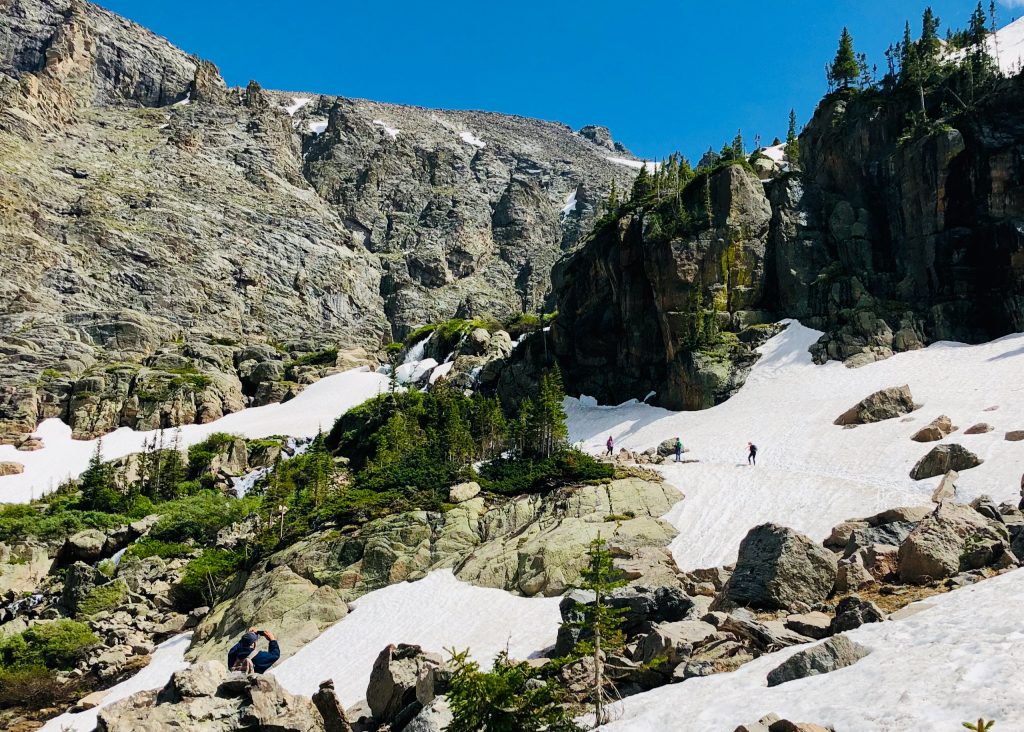
The last part of the trail is not for the faint of heart. You must climb 40-50 vertical feet of wet, rocky boulders next to Timberline Falls before reaching the Lake of Glass. Going up was one thing– but coming down felt borderline treacherous. If you’re afraid of heights, you may want to skip this hike.

If you do make it past the falls, you’re rewarded with a dramatic cirque surrounding Sky Pond and Lake of Glass. The wind gusts can be incredible here. They literally blew the sunglasses off my head and over the cliff (never to be seen again). The approach from Lake of Glass to Sky Pond is mostly a large rock scramble. I decided to turn around at the Lake of Glass– taking the wind smack as a warning from nature not to go any further.

Alpine Ridge Trail
One of the highlights of the park is the Trail Ridge Road. Only open for a few months out of the year, the road takes you up above 12,000 feet and crosses the continental divide before dropping back down into the west side of the park. Before the descent, at Fall River Pass, you can stop in at the Alpine Visitor center to learn more about this unique alpine landscape and do a short .7 mile hike up Alpine Ridge Trail. Because of the thin air, this trail requires either a high level of fitness or a willingness to take it slow. For a few short weeks in Summer, there is an explosion of wildflowers up here. I was lucky to be there in July to see them in their full glory against the back drop of the Never Summer Mountains.

With over 350 miles of hiking trails in Rocky Mountain National Park, I just barely scratched the surface on this trip. I love leaving a place knowing there are many more unexplored corners to see. You leave with both a new found appreciation for it along with a longing to come back again. What could be better than that?

